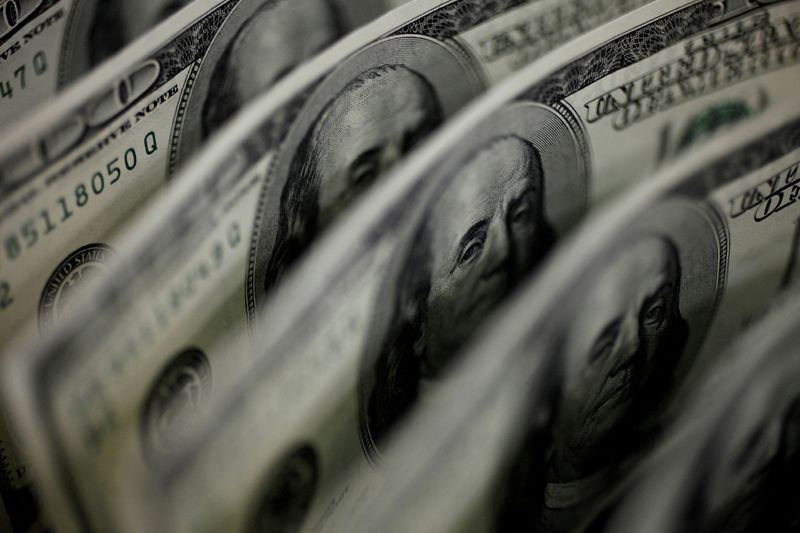By Naomi Rovnick and Chiara Elisei
LONDON (Reuters) - A financial stream that helped fund the world's riskiest companies and grew into a market estimated at $1.5 trillion in the low interest rate years is drying up, as aggressive rate hikes bring tougher borrowing conditions and uncertainty.
The pace of issuance of so-called collateralised loan obligations (CLOs), which bundle loans of the weakest corporates and repackage them as bonds, has stalled.
Specialist asset managers minted CLOs worth more than half a trillion dollars in 2021, a year of heavy post-pandemic monetary stimulus. Almost $69 billion worth were launched or refinanced during the first half of this year, down 41% on the same period in 2022, JP Morgan data shows.
These vehicles, popular with hedge funds, insurers and asset managers when borrowing costs are low and investors hunt for yield, account for up to 60% of demand for the junk loans rated single B or below, according to S&P Global Ratings.
But the market has sputtered just as companies whose debt is considered a speculative investment face a mountain of refinancing needs in coming years.
The sharpest rise in global interest rates in decades, an anticipated global recession and fewer new CLOs to support junk rated borrowers potentially create a toxic cocktail of corporate distress.
"There haven't been large credit losses yet, but the expectation is that bankruptcy rates [for corporate loans] will go up," said Rob Shrekgast, a director at KopenTech, an electronic trading and analytics platform for CLOs.
STORM CLOUDS
CLOs have grown into a market worth about $1.5 trillion, KopenTech said.
Looking ahead, demand for the bonds issued by these vehicles will "decline meaningfully," Bank of America (NYSE:BAC) (BofA) credit strategist Neha Khoda noted, with potential for higher default rates.
While low now, debt defaults are rising. A restructuring at French retailer Casino and the bankruptcy of U.S. retailer Bed Bath & Beyond (OTC:BBBYQ) expose cracks in business models that were previously insulated by abundant money supply and low rates, analysts said.
S&P Global estimates that more than one in 25 U.S. businesses and almost one in 25 European companies will default by March 2024.
It's going to be a slow burn of rising distress, said Marta Stojanova, leveraged finance director at S&P, of junk-rated borrowers.
A "downside risk," she said, would be "the lack of funding at an affordable level," for weak cashflow borrowers whose existing loans are due for refinancing.
Weak cashflow companies, whose debt is considered junk, are already paying the highest average interest rate on floating rate debts in 13 years, S&P added.
U.S. companies with speculative credit ratings, who dominate global CLO loan pools, need to refinance around $354 billion of debts by end-2024, then a further $813 billion in 2025 to 2026, S&P estimates.
OBSTACLES
The CLO market has slowed because investors want higher payouts as compensation for the risk of lending to weaker borrowers.
"You've got more risk now and you want to be compensated for that risk," said Aza Teeuwen, portfolio manager at fixed income specialist asset manager TwentyFour.
When forming CLOs, the managers of these vehicles use the loans as backing for bonds with varying prices and different degrees of safety. Investors in the tranches considered safest get the lowest returns, while those in the riskiest equity portion receive excess cashflows after other investors are paid out.
Now, fund managers who buy the highest rated tranches are demanding higher yields. That has squeezed equity returns, and without equity investors, CLOs cannot be put together.
S&P calculates that while CLO equity investors were able to get a 15% annual return before 2022, deals priced now would offer about 7%.
"You can no longer put together a (new) portfolio," said Laila Kollmorgen, a managing director and CLO specialist at PineBridge Investments.
Kollmorgen said she was still finding good opportunities in highly rated CLO tranches sold in the secondary market.
"We know there will be (loan) defaults at some stage," said Teeuwen. "The (CLO) equity doesn't make enough money to justify buying it."
CLOs have a reinvestment period of up to five years, after which they cannot buy new loans. According to BoFA, 38% of CLOs in existence will reach that expiry date by end-2023.
That's another source of shrinking demand for junk debt, and a factor BofA's Khoda defines as "a red-flag for issuers with near-term maturities."
PineBridge's Kollmorgen sees uncertain times for high- risk borrowers ahead.
"Increases in interest rates will have an impact on companies and their balance sheets, its just simply a question of when this actually comes through."
